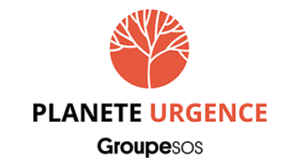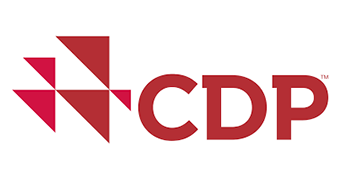
CLIMATE PHILANTHROPY
A new financing tool designed by NGOs
and created for companies
Planète Urgence offers companies a new way to contribute to climate change mitigation, without using carbon credits: Climate Philanthropy.

What’s at stake for businesses ?
A study by the Institute and Faculty of Actuaries reminds us that global GDP could collapse by 50% between 2070 and 2090 if companies do not act quickly and decisively to protect the climate and biodiversity, by reducing their negative impacts and increasing their direct and indirect positive impacts.
Today, companies are therefore being called upon to go beyond their reduction and avoidance targets by channelling additional climate financing into projects outside their value chains.
Although the carbon credit market is currently the dominant solution for businesses, it does have certain limitations. Its complexity and recent media controversies deter players from financing climate projects, which are essential to achieving the objectives of the Paris Agreement.
Climate Philanthropy is a response to the challenges faced by organisations wishing to support climate projects outside their value chain.
Planète Urgence has developed an innovative financing mechanism, complementary or alternative to carbon credits: Climate Philanthropy.
This allows companies to support projects with a measured climate impact, without intermediaries, via sponsorship (tax-exempt), while communicating the carbon impact of this donation in their climate strategy and in their extra-financial reporting.
This guaranteed impact is made possible by a recognised scientific calculation methodology developed in the field, verified by a panel of experts including the French Agency for Ecological Transition (ADEME).
Discover the process!
Benefits for companies

Credibility and transparency: a ‘Science-Based’ methodology developed with a college of experts combining Institutions, Research, and Companies (including ADEME, CIRAD, HAMERKOP, SWEEP) and verifiable by an independent third party

Climate ROI: a contribution without intermediaries and directly to the project owner, within a philanthropic framework (eligible for tax exemption and can be integrated into the 1% for the Planet contribution)

No greenwashing: a climate contribution without ownership of carbon credits making offsetting impossible, making it possible to diversify the contribution portfolio and the associated risks

Strong communication: the creation of a new narrative to engage internal and external stakeholders by explaining the projects and their carbon, biodiversity and human impacts

Integration into reporting frameworks: Climate Philanthropy can be intergrated into a company’s climate strategy and can be valued in the following standards: SBTi BVCM, NZI, CSRD, CDP, BCorp…

Long-term philanthropy: the company contributes in annual or multi-year formats, but the funds are used to finance the project over 10 years, with dedicated reporting for the company, which assesses the long-term impact of its support
Integration into benchmark reporting systems
Because Climate Philanthropy uses a scientific methodology for calculating the carbon impact of an NGO project, based on the most widely recognised international methodologies, it can be integrated into a number of evaluation or reporting benchmarks.
Our teams are here to support organisations in this process !
An ecosystem of expert partners









Case study: discover how Davidson consulting is contributing to global climate neutrality through Climate Philanthropy
- Multi-year philanthropic support enabling the development and monitoring over 10 years of 3 reforestation projects in Indonesia, Madagascar and France
- Reporting and monitoring of climate (TeqC02), socio-economic and environmental impacts
- Valuation in the company’s contribution strategy and in its reporting/assessment systems (BCorp, CSR Report, CDP, etc.)
Download the full Business Case
to discover their commitment
 « At Davidson we believe that given the climate emergency, it is essential to act using all the levers at our disposal, simultaneously.
« At Davidson we believe that given the climate emergency, it is essential to act using all the levers at our disposal, simultaneously.
On the one hand, we are working to improve the measurement of our footprint, and to identify and implement all the potential ways of reducing our emissions, within an SBTi trajectory.
On the other hand, we believe that it is essential to act at the same time on carbon sequestration, without waiting to be perfect in our reduction strategy.
That’s why we’ve also decided to make a significant contribution to projects to restore forest carbon sinks, in partnership with recognised players operating as close to the ground as possible, where this is a priority for the world »
Bertrand Bailly
Managing Director Davidson consulting
and member of the first Businesses for Climate Convention
More than a scientific methodology, a movement!
Climate Philanthropy is a movement initiated by Planète Urgence, but made open-source to other NGOs and actors of the public interest, in order to increase its use and application to other types of projects (currently, Climate Philanthropy is focused on reforestation projects).
Each user NGO signs a free user licence in which it undertakes to use the method in its entirety and to respect its spirit.
The following NGOs have signed this licence:


Join the movement!

Want to find out more? Check out our FAQs!
Why has Planète Urgence created this carbon measurement tool for Climate Philanthropy projects?
Almost four years ago, the member organisations of Coordination Sud’s Climate and Development Convention met to share their experiences concerning access, or rather the lack of access, to climate finance. Following these discussions, Planète Urgence conducted a survey of 41 NGOs in 18 countries to identify possible alternatives for rethinking carbon finance and making it accessible to public interest organisations carrying out climate impact projects.
This survey revealed two key figures:
- 72% of respondents considered that current carbon finance was not adapted to their needs and therefore did not allow them to finance their climate impact project.
- 61.5% of respondents considered that they needed an adapted monitoring and evaluation tool to measure the climate impact of their projects
To respond to this problem, Planète Urgence has developed a methodology to measure the impact of reforestation projects over a period of 10 years.
What is the carbon measurement method for a reforestation project (MCPR)?
The method for measuring the carbon impact of a reforestation project was developed by Planète Urgence in collaboration with a group of climate experts, including Hamerkop Consulting, CIRAD and ADEME, within the framework of Climate Philanthropy. The MCPR method is based on the same technical principles as the standard carbon certification methodologies (reference scenario, additionality and monitoring by field measurements based on sampling). However, these concepts have been simplified in order to better adapt them to the realities of project developers on the ground, thereby enabling a greater proportion of funding to be redirected directly to the benefit of the project, while reducing the administrative costs often associated with carbon certification (costs of carbon credit brokers/sellers, costs of Verra registries, costs of Verification and Validation Bodies).
The method has been developed for three types of reforestation project: agroforestry, mangrove and wood-energy. It provides for monitoring over a period of 10 years and encourages verification of the project by audit by an independent third party.
How does Planète Urgence’s method estimate the carbon impact of Climate Philanthropy projects?
In the early years of the project, the MCPR method estimates the carbon sequestration impacts of reforestation projects using the EX-ACT tool developed by the Food and Agriculture Organization of the United Nations (FAO). Once the trees or mangroves have reached a sufficient size, field measurements are carried out by trained local technical teams to update the estimates and record the diameter of the trees at breast height (DBH). These data are then integrated into allometric equations, which enable mathematical relationships to be established between the size of a part of an organism (such as its roots or trunk) and its total size.
These equations are frequently used to estimate biomass or growth based on measurable characteristics such as height or trunk diameter. This makes it possible to accurately calculate the carbon storage of the project.
Please refer to appendices 3 and 6 of the Climate Philanthropy guide for more information on the content of reports submitted to funders.
How do you calculate your contribution level?
There are three methods:
- The ton-for-ton method: this approach involves setting a level of contribution proportional to the company’s emissions (annual, residual, historical, etc.). It should not be used as a means of compensation, but as a tool for contributing to global issues and the company’s impact. Some companies may also take into account the organisation’s historical emissions.
- The money-for-money method: a practical application of this approach is the ‘1% for the planet’: a worldwide movement led by companies that have decided to donate 1% of their sales to environmental protection associations. This is a highly virtuous approach, but it avoids any direct link between a company’s climate impact and the funds it raises to take responsibility for the damage caused by its activities. It does not provide a direct price signal for reducing its own emissions, nor does it offer a transparent indication of the ambition and alignment of its activities with global climate objectives.
- The money-for-ton method: this approach is backed by the internal carbon pricing mechanism, which allows companies to contribute in line with their emissions, in a virtuous approach that avoids any greenwashing. This internal taxation mechanism is recommended because it enables us to move away from an approach that compares the tonnes emitted with the tonnes sequestered by the projects supported, thereby enabling us to finance projects that focus on quality (and not on the quantity of sequestration) and to value other impacts that go beyond carbon (for example: social, for biodiversity, for the resilience and adaptation of populations to climate change, etc.).If you would like to go further in defining an internal carbon price, our teams will be happy to provide you with benchmarks and decision-making support.
What are the differences between Carbon Credits and Climate Philanthropy?
The common objective of carbon credits and climate contributions is to facilitate the financing of players wishing to have a direct impact on the climate, by making it easier to measure this impact over time. However, there are several differences between Carbon Credits and Climate Philanthropy. Firstly, the method for measuring the carbon impact of reforestation projects developed by Planète Urgence is based on principles similar to those of carbon standards (such as the reference scenario, additionality and field monitoring). However, these principles have been adapted to better respond to operational realities in the field and to the specific needs of NGOs in order to rationalise implementation costs. This method enables the carbon impact of a project to be estimated over a 10-year period.
Secondly, companies or entities that commit to climate contributions relinquish any claim of ownership over the impacts generated by their investments. Unlike carbon credits, this mechanism is not based on the purchase or resale of certificates attesting to full ownership of the associated climate benefits.
Because Climate Philanthropy is based on a logic of real contribution without possession of credits (which can be included by the company in its balance sheet), its methodology means that it can be implemented with a focus on the obligation of means rather than results, making it much easier to implement and therefore more effective.
For a more in-depth analysis, please consult Appendix 2 of the guide to climate philanthropy: Technical comparison between carbon certification and climate philanthropy.
Does Climate Philanthropy give rise to credits?
No. Companies or other entities that make climate contributions renounce any claim of ownership over the impacts resulting from their investments. The scheme does not involve the purchase or resale of certified credits claiming full ownership of the associated climate benefits. Because of the nature of climate contributions, they cannot be traded, resold or written off.
Is Climate Philanthropy a way of claiming to be carbon neutral?
No.
In line with ADEME’s advice, claims that a company or its products, services or events are carbon neutral should not be used, as they are physically incorrect and lead to perverse effects of clearance and immobility. There is therefore no point in declaring an organisation to be carbon neutral, whether by purchasing carbon credits or financing climate philanthropy.
The Paris Agreement is clear: to limit global warming to less than 2°C, we need to achieve carbon neutrality by 2050.
“Carbon neutrality” consists of balancing all greenhouse gas emissions from human activity with anthropogenic sequestration of equivalent quantities of CO2, on a planetary scale. Carbon neutrality can therefore only be applied on a global scale.
Furthermore, the claim of carbon neutrality may imply that it is possible to combat climate change effectively without drastically reducing emissions and without changing individual and collective behaviour, which is unfortunately unrealistic in terms of the objectives of the Paris Agreement. Its inappropriate use therefore represents a major brake. A drastic and widespread reduction in emissions is the priority and must involve all players.
How does Climate Philanthropy fit into a company’s climate strategy?
There are three recognised frameworks for the use of climate philanthropy by organisations:
1. The ‘Net Zero Initiative’ framework, within Pillar C
Carbon sequestration actions aimed at increasing global carbon sinks are taken into account in the Net Zero Initiative (NZI) framework developed by Carbone 4, within Pillar C: ‘increasing carbon sinks’.
Within this framework, companies are encouraged to support projects that make an additional contribution to the development of global carbon sinks, in order to mitigate climate change. The methods of action provided for in this reference framework are not limited to carbon credits, but also include ‘verified projects that do not generate carbon credits’.
2. The Science Based Target Initiative (SBTi) for Beyond Value Chain Mitigation (BVCM)
The SBTi (Science Based Target Initiative), supported by the Carbon Disclosure Project (CDP), the United Nations Global Compact, the World Resources Institute and WWF, offers a rigorous and scientific framework to help companies develop effective decarbonisation strategies.
Climate Philanthropy is perfectly aligned with the recommendations of the guidelines (and can be developed within this framework), which invite companies to go beyond the neutralisation of residual emissions, by contributing to certified or non-certified projects capable of credibly proving their carbon impact.
3. Philanthropy with impact monitoring
Climate Philanthropy is aimed at any organisation wishing to measure and report on the carbon impact of a philanthropic project, whether or not it is part of a climate strategy defined by the donor. It offers companies, foundations and public bodies (local authorities, public agencies, etc.) the opportunity to track the precise impact of their support over a 10-year period, with the option of independent verification by a third party, as part of a strategy of philanthropy with proof of impact.
Can all associations use the MCPR method to better measure and value their impact?
Yes, all associations can use the MCPR method under three conditions:
- Download the complete guide.
- Contact Planète Urgence at partenariat@planete-urgence.org to inform them of this approach and sign the user agreement.
- Determine whether you are autonomous in using the methodology or whether you require support from Planète Urgence.
Is climate philanthropy available to any reforestation project run by an NGO?
Yes, Planète Urgence has developed a support programme for NGOs wishing to use this methodology, including dedicated training and the provision of technical tools (baseline + monitoring). All NGOs have the opportunity to increase their skills on these subjects and to use this method.
If an association other than Planète Urgence announces that it is using the method, how can we ensure that it is committed to respecting the method in its entirety?
The use of the method must be governed by a (free) user licence signed between the NGO carrying out the project and Planète Urgence. All the NGOs which have signed the user licence are mentioned on the Planète Urgence web page. For any questions or doubts, please contact: partenariat@planete-urgence.org.



